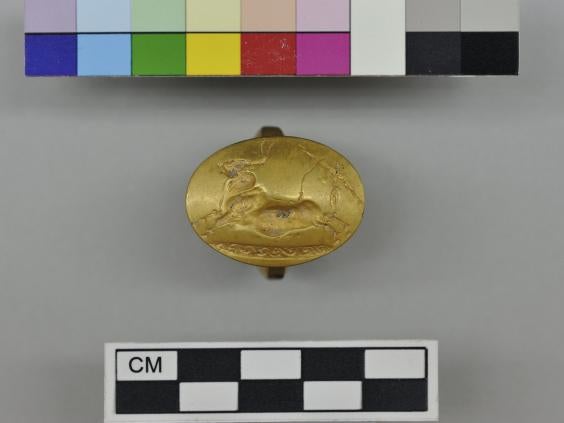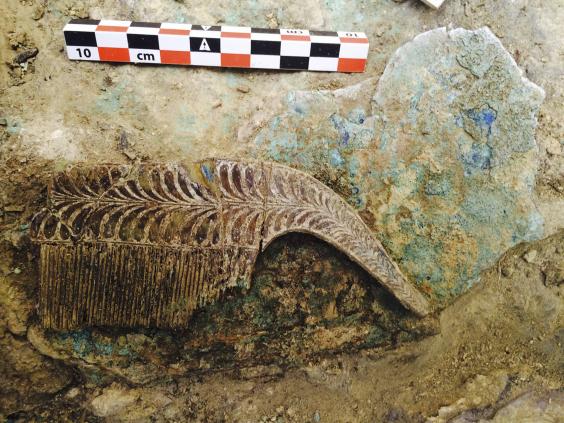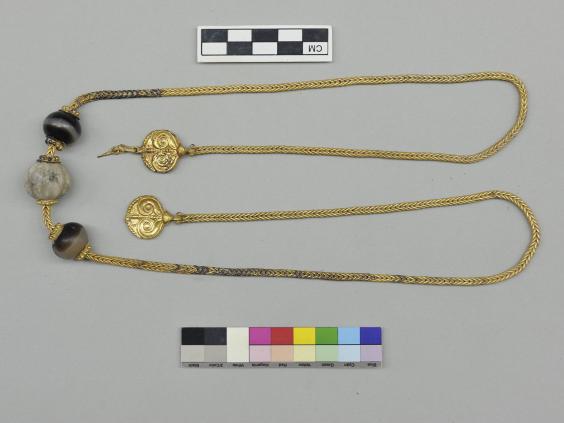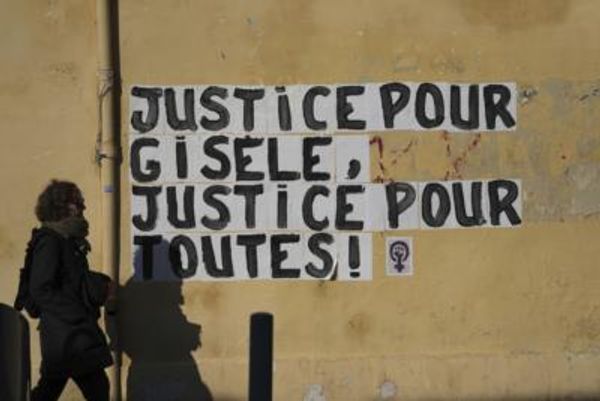
The warrior was buried some distance from the ancient palace of Pylos, but the riches that went with him reveal that he lived like royalty.
For over 3,500 years, his skeleton was kept company underground by, among other things, solid gold rings, intricately-built swords, fine-toothed ivory combs and more than a thousand precious stone beads. Unlike most of his brethren of that era, his dinnerware was made not from the more humble ceramic, but rather with bronze.
This is a bounty made all the more improbable by the fact that it appears to have belonged to just one person. Whereas ancient burial grounds were customarily shared, this warrior had a tomb all to himself.
The Greek Culture Ministry announced on Monday that this shaft tomb and its concomitant treasures have been unearthed in southwestern Greece by archaeologists from the University of Cincinnati. The team led by Sharon Stocker and Jack Davis, a husband and wife, started excavating the site mid-May and just finished removing the bones from the tomb last Tuesday.
The ministry called the treasure “the most important to have been discovered [in continental Greece] in 65 years.” The find occurred in the first season of a five-year project in the area surrounding the Nestor palace of ancient Pylos (modern-day Chora, Messinia), a destination immortalized in Homer’s “Odyssey.”
“We never could have imagined the extent of the wealth that was contained in the particular grave,” Stocker told The Washington Post, recounting that she and Davis had many doubts about what they would discover when they first noticed what appeared to be exposed wall stones.
To find a grave there was already unlikely; to find an unlooted grave, a grave with its artifacts intact, was a rare and historic feat.
The husband-and-wife archaeology team of Sharon Stocker and Jack Davis at a wealthy Ancient Greek warrior's tomb. (University of Cincinnati) The husband-and-wife archaeology team of Sharon Stocker and Jack Davis at a wealthy Ancient Greek warrior’s tomb. (University of Cincinnati)
The site has a history of serendipity for University of Cincinnati archaeologists, for it was near there that Carl Blegen first located the Pylos palace in 1939. In the early 1950s, he excavated a number of tombs, including a large beehive tomb situated next to the one that has just been found.
The archaeologists are currently uncertain of the identity of the man found buried in it, but they believe he was likely a warrior-priest who might have acquired the goods in distant raids. The Minoan style iconography on some of the seal stones, small gems used as amulets, suggests that he may have been a religious figure, but he was also buried with martial objects like swords and daggers.
Stocker pointed out that one of the daggers, overlain in fine gold, appears to be more ceremonial. And while most warrior graves include a large group of arrowheads, these were absent here.
“One of the most surprising things was the sheer quantity of seal stones,” she said. “Usually with burials you find four or five, sometimes ten or as high as 20, but this burial had around 50 seal stones, which are incredibly artistic objects and presumably extremely valuable.”
The stones are made of carnelian, amethyst, jasper, agate and gold. By comparing the artifacts with objects in tombs that have been securely dated through their pottery, the archaeologists have concluded that the warrior was buried around 1500 B.C, at the dawn of European civilization.
The artefacts are currently being kept at the Archaeological Museum of Chora, where they await conservation procedures. One question that the research team will examine is: how did a man from Pylos acquire these objects?
Many of them appear to have either been obtained in Crete or from an itinerant Cretan merchant. Once they are analyzed for composition, Stocker said, the archaeologists may be able to gain new understandings of the vast trade networks they suspect existed between the ancient civilizations.
The amethyst beads could have been imported from the Middle East, while amber originates from the Baltics.
In the view of James C. Wright, the director of the American School of Classical Studies at Athens, the grave lies “at the date at the heart of the relationship of the mainland culture to the higher culture of Crete,” according to the New York Times.
But trade is just one possibility, as are raids. Another possibility is marriage: the warrior might have married into a Cretan dynasty, or perhaps even founded a new dynasty himself. The latter would mean that he likely arrived in Pylos with a group of people and conquered the town’s existing inhabitants, which would explain why he wasn’t buried with anyone else — either he was a very important person in the known palatial society, or part of a separate community altogether.
The warriors’ entombed treasures also point to a possible revelation about Pylos’s status in ancient Greece. Prior to this discovery, Stocker said, such great wealth hadn’t been discovered anywhere besides Mycenae, an archaeological site outside of Athens. Pylos has generally been considered a marginal locale, but this new find indicates that lavish riches existed there as well.
“On some level it means that we need to rethink a lot of the history we have written,” Stocker said. “This is the only ancient grave found of this wealth in Greece belonging to only one person.”
Stocker noted that while graves with more ample riches have been uncovered in Mycenae, those contained multiple corpses, making the distribution of wealth across the individuals difficult to discern.
The team’s physical anthropologist will study the bones of the skeleton to formulate a picture of who the warrior was, using DNA analysis and other methods to determine his cause of death and stature. Luckily, Stocker said, their subject has “extremely well-preserved teeth.”
Washington Post










